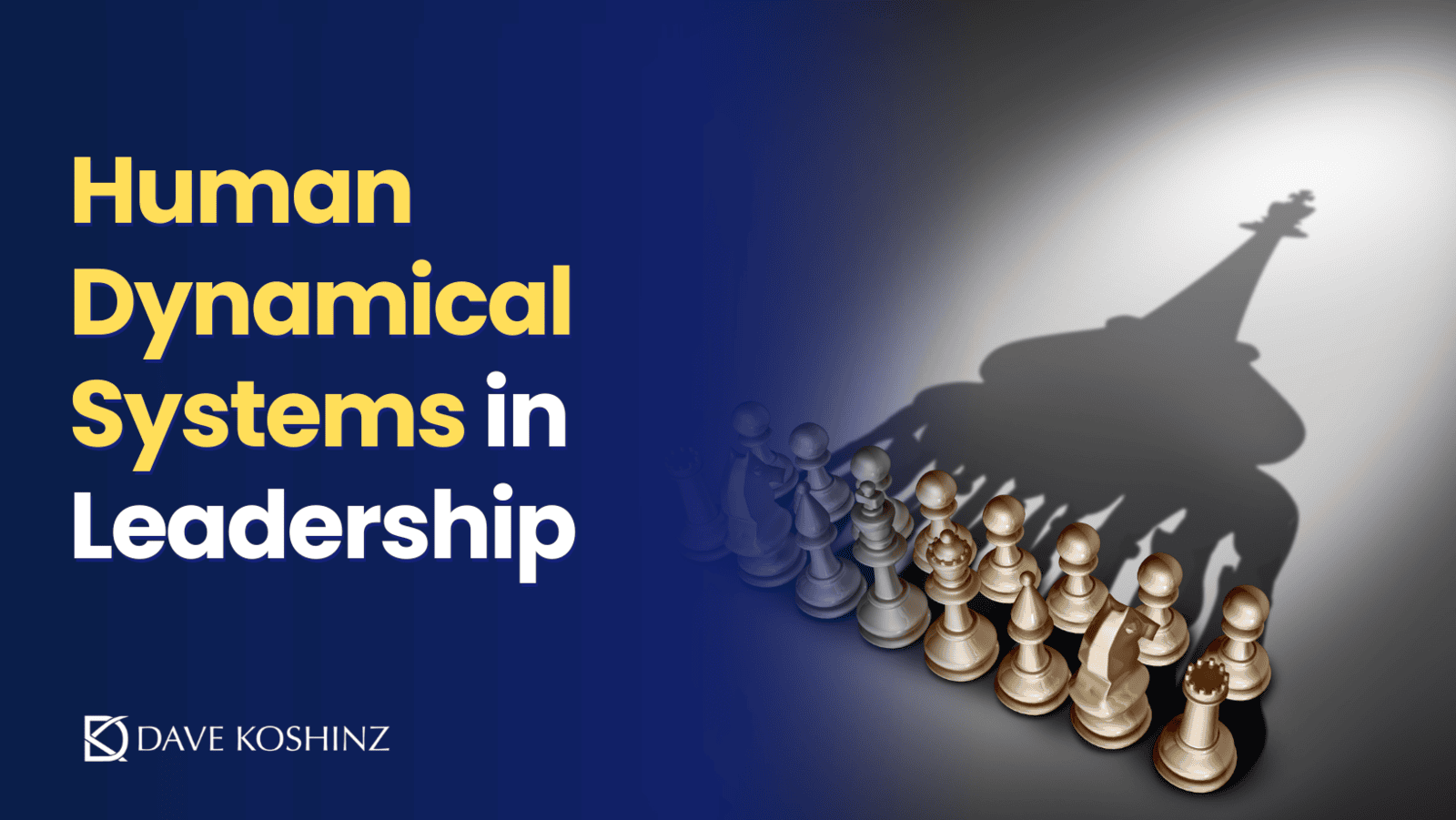
I'm inspired by Dr. Alexandra Paxton's work on human dynamical systems, here is an article highlighting key takeaways.
Leaders today navigate a complex web of relationships—guiding teams, forging strategic partnerships, and cultivating a personal leadership style.

Dr. Alexandra Paxton’s work on human dynamical systems reveals how moment-by-moment interactions can generate powerful patterns of cooperation, conflict, and transformation.
A dynamical systems perspective reminds us that leadership isn’t just about single actions or singular traits. Instead, leadership arises in the flow of ongoing social feedback loops—micro-signals in speech, body language, and emotional tone that continuously shape team culture. When leaders become attuned to these signals, they can steer themselves and their teams toward greater cohesiveness and productivity.
“In the dance of conversation, every step you take moves the entire system.” — From a dynamical systems perspective
1. Synchrony and Coordination: The Heart of Resonant Leadership
What is Synchrony?
Synchrony refers to the subtle ways that people align with each other during interactions—mirroring posture, vocal patterns, gestures, or even physiological rhythms (like heart rate). Dr. Paxton’s work underscores that this alignment, however subtle, is linked to trust, rapport, and collective flow.
Personal Leadership Application
Self-Awareness of Your Own Signals: Pay attention to how you’re showing up—your posture, tone, and pace of speech can either establish or disrupt synchrony with others.
Intentional Alignment: Before stepping into a high-stakes conversation, take a moment to center yourself. Use calm, measured speech and consistent eye contact to invite synchrony from the start.
Team Leadership Application
Encourage Shared Routines: Simple rituals at the start of meetings—like a short grounding exercise—can synchronize the team’s emotional and mental states.
Model Congruence: Your own gestures, tone, and demeanor set the tone for your team. If you remain calm and balanced, it can help the entire group synchronize around constructive behaviors rather than frenetic ones.
“Coordination is not a passive byproduct; it is an emergent property that arises from each person’s active participation.” — Paraphrased from Paxton’s dynamical systems research
2. The Dynamical Systems Approach: Embracing Continuous Feedback
The Non-Linear Nature of Leadership
A dynamical systems lens stresses that leadership flows from continuous feedback loops—where your words, actions, and even micro-expressions shape and are shaped by your team’s responses.
Emergence: Team culture isn’t simply “installed” by a leader—it emerges from ongoing interactions and reactions within the group.
Adaptivity: Because interactions evolve in real time, small shifts in your communication (such as tone or choice of words) can create profound downstream effects on team morale and engagement.
Personal Leadership Application
Iterative Self-Improvement: Practice regular self-reflection to notice how your leadership style is impacting others. If something feels “off,” tweak your approach rather than waiting for big changes.
Open Feedback Loops: Encourage ongoing feedback from trusted peers or mentors. When you invite honest reflections on your leadership presence, you gain early signals to adjust before issues escalate.
Team Leadership Application
Create Real-Time Feedback Channels: Rather than waiting for formal reviews, foster a culture of constructive day-to-day feedback. This keeps communication loops short and responsive.
Experiment and Pivot Quickly: In dynamic markets, teams that can pivot effectively often have leaders who spot micro-shifts in sentiment and performance. Adapt quickly and empower your team to do the same.
“Systems think in loops; if you want to change the system, you have to change its feedback loops.” — General systems theory axiom
3. Conflict, Disruption, and Hidden Synchrony
Redefining Conflict
Dr. Paxton’s findings highlight that conflict doesn’t necessarily mean a breakdown in synchrony—sometimes people remain tightly “in sync” even when disagreeing. This challenges the assumption that conflict is purely negative. It can also be a signal that a strong connection exists, albeit under tension.
Personal Leadership Application
Mindful Tension Management: When you feel tension rising in a conversation, notice your breath, tone, and posture. A measured response can maintain functional synchrony even if the content is contentious.
Reframe Conflict as Opportunity: Recognize that conflict can be a strong sign of engagement. Use it as a prompt for deeper inquiry and solution-finding rather than immediate shutdown.
Team Leadership Application
Constructive Conflict Channels: Provide structured ways for teams to disagree productively—like formal debate sessions or “red team” exercises. This allows conflict energy to channel into creative problem-solving.
Spot Hidden Alignment: Even in disputes, there may be shared commitments or values underneath. Help both sides see these commonalities to transform conflict into collaboration.
“The opposite of conflict isn’t distance—it’s creative engagement.” — General systems insight
4. Measurement and Reflection: Observing the Intangible
Bringing Structure to Subtle Dynamics
Dr. Paxton’s research uses computational methods (like Cross-Recurrence Quantification Analysis) to measure moment-by-moment alignment in conversations. While leaders don’t need to run these analyses, the principle is invaluable: our interactions have structure beneath the surface.
Personal Leadership Application
Daily Reflection: End your day by jotting down key leadership interactions. Note the moments that felt “off” or “in flow.” This practice helps you spot patterns in how you lead.
Listen for Emotional Cues: Beyond the content of conversations, pay attention to tone, pauses, and energy shifts. Over time, you’ll become adept at recognizing subtle signals of alignment or discord.
Team Leadership Application
Micro Check-Ins: During lengthy discussions or projects, pause occasionally for a quick “How’s the energy?” question. Encourage team members to share brief impressions, revealing hidden alignment or tension.
Celebrate Small Wins: Recognize incremental shifts in team culture—like a more civil tone in conflict or higher enthusiasm in meetings. These victories can reinforce positive dynamical patterns.
“What seems intangible—like a ‘vibe’—often has measurable patterns that can be harnessed for growth.” — Synthesized from Paxton’s research themes
5. Practical Strategies to Guide Your Leadership Journey
1/ Foster Attunement and Rapport:
Use eye contact, mirrored body language, and aligned vocal pacing to build trust in one-on-one settings.
Start team meetings with a short alignment ritual—like a minute of quiet reflection or a unifying question.
2/ Embrace Experimentation:
Recognize your leadership influence as a continuous feedback loop. Small changes in tone or structure can yield big shifts.
Encourage your team to experiment with different workflows or communication styles to find what creates the best “team synchrony.”
3/ Reframe Conflict as a Gateway:
Lean into conflict with curiosity. Explore the subtle ways you might remain in sync with the other person (shared values, similar emotional investment) to pivot toward resolution.
Create safe “disagreement zones” in your team culture so that conflict leads to adaptation rather than alienation.
4/ Tune into Emotional Undercurrents:
A leader’s emotional energy has a ripple effect on the team. Practice emotional regulation—particularly during high-pressure scenarios.
Support emotional health in your team by normalizing rest, reflection, and open discussions about stressors or anxieties.
5/ Adapt and Iterate in Real Time:
View the team as a living system in motion. Be willing to adjust meeting formats, communication norms, and leadership tactics based on the emerging dynamics.
Celebrate learning moments. Each disruption or challenge is a data point guiding you to refine your approach.
Dr. Alexandra Paxton’s research on human dynamical systems illuminates the deep currents of interaction that shape leadership at every turn. By recognizing that each moment of speech, gesture, and emotional expression feeds into a broader feedback loop, leaders can cultivate stronger personal alignment, foster team synchrony, and transform conflict into collaboration.
Whether you’re striving to refine your own leadership style or looking to elevate an entire organization’s culture, a dynamical systems perspective offers a powerful roadmap: stay attuned to micro-signals, engage with conflict constructively, and remember that subtle shifts in your presence can ripple out to create profound change.
“Leadership is a living system—every word, every gesture resonates through the network of your team.” — Inspired by Paxton’s dynamical systems approach
By integrating these ideas into your personal leadership practice and team strategies, you encourage a dynamic, adaptive environment—one that thrives on continuous feedback, shared alignment, and human connection.

